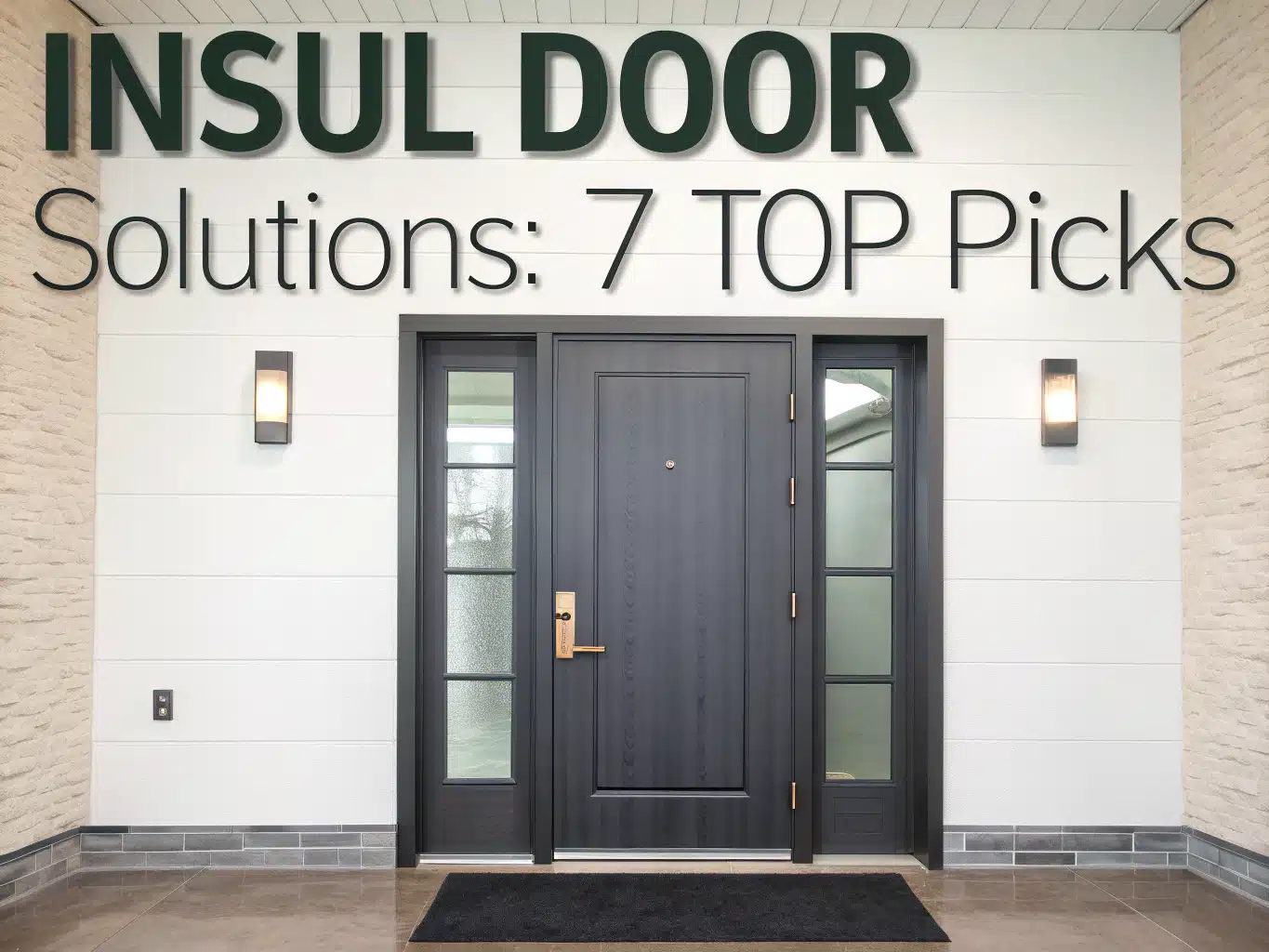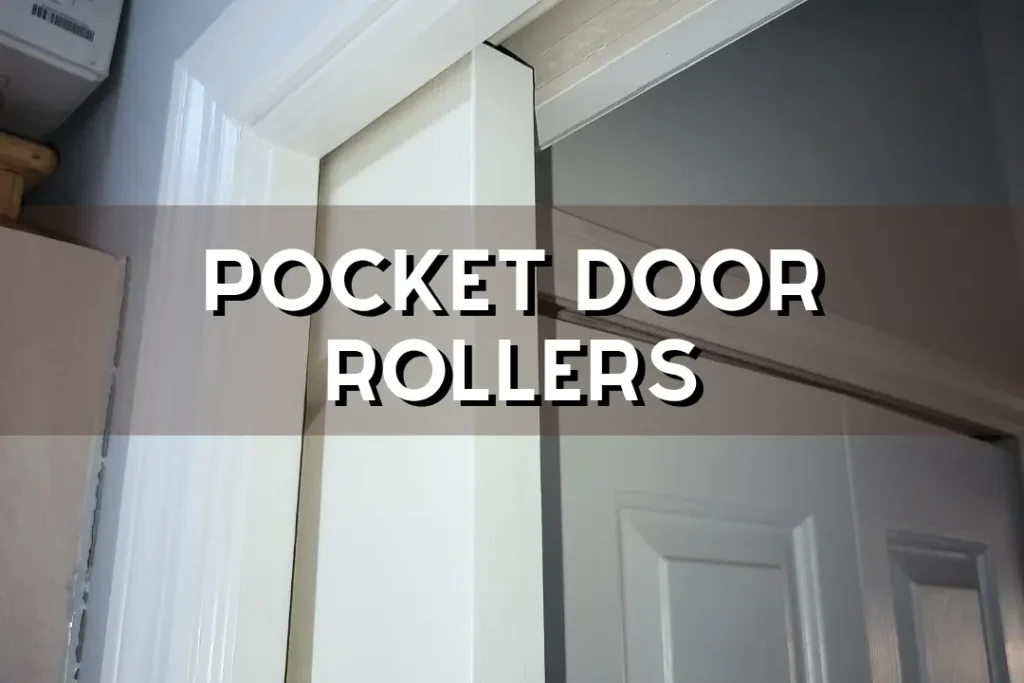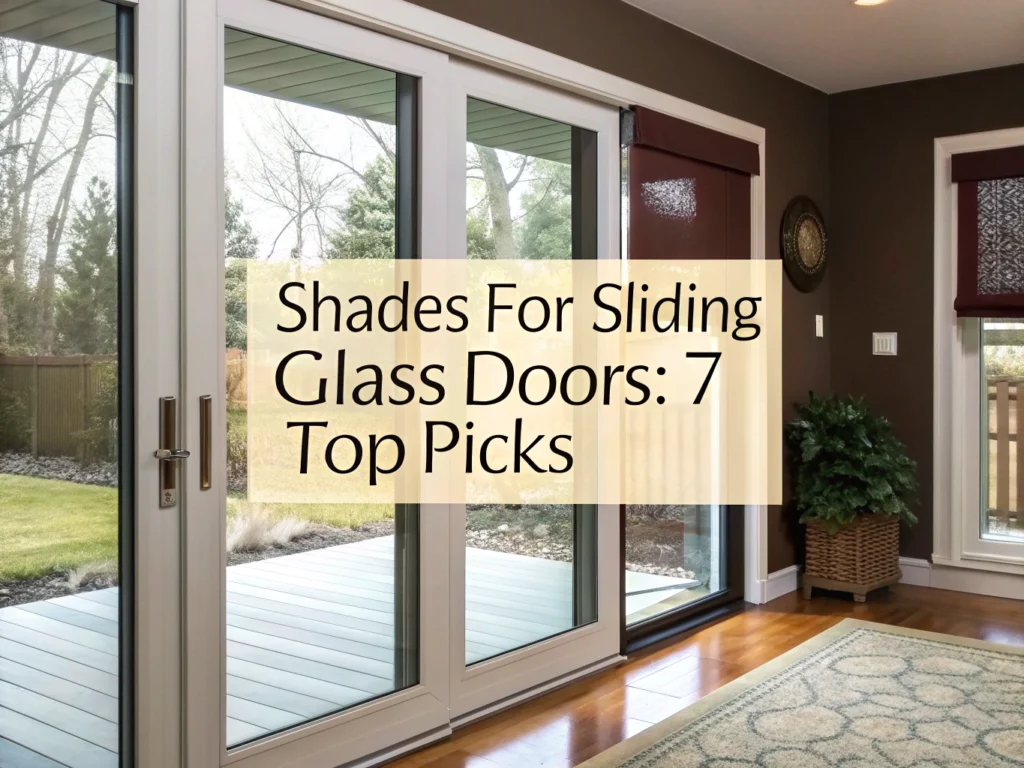
Did you know that installing an insul door can significantly cut your energy bills? These doors might seem like any other, but their impact on your home’s heating and cooling efficiency is huge. By understanding your options and knowing what to choose, you can create a more comfortable and cost-effective living space without compromising on style.
Insul doors combine advanced insulation technology with durable construction to dramatically reduce energy costs and improve home comfort. These high-performance entry and storm doors feature insulated foam cores, composite frames, and Low-E glazing that can achieve R-values up to 9 while meeting ENERGY STAR qualification standards.
What Is an “Insul Door” and Why It Matters
An insul door refers to an insulated entry or storm door that improves thermal performance, reduces drafts, and enhances comfort and noise control. These doors use advanced materials like polyurethane foam cores in fiberglass panels or steel construction, composite stiles and rails, high-performance frames, and multi-point adjustable weatherstripping.
The construction materials that drive superior insulation include insulated foam cores made from polyurethane in fiberglass and steel doors. Composite frames resist thermal bridging while multiple weatherstripping layers create tight air seals. Premium systems also feature reinforced stiles and rails that maintain structural integrity without compromising thermal performance.
Energy benefits include higher R-values, ENERGY STAR-qualified models, and Low-E glazing on glass lites that reduce heating and cooling bills. Fiberglass doors commonly use insulated foam cores and often meet ENERGY STAR criteria. Premium fiberglass systems can reach high R-values up to R-9, showcasing the upper bound of thermal performance for insulated entries.
7 Top Insul Door Picks for 2025
Pella Fiberglass Entry Doors (Flush-Glazed 3/4 Light Option)
Pella appears at or near the top of customer-trust front entry door brand lists for the latest studies. Their fiberglass panels resist dents and corrosion while composite frames offer multiple glass options with strong energy performance positioning. The flush-glazed design provides clean sightlines with realistic wood-grain or smooth finishes, privacy glass options, and high-performing composite frame construction.
Therma-Tru Smooth-Star Fiberglass Entry Doors
Frequently listed among the most energy-efficient door lines, Therma-Tru combines fiberglass skin with insulated cores and broad style options. Energy-efficient door roundups consistently highlight Therma-Tru for performance, construction, and glazing options. Their configurations offer durable construction with multiple lite and panel choices for various architectural styles.
Masonite VistaGrande and Steel/Fiberglass Collections
This budget-friendlier range features insulated foam cores and ENERGY STAR-qualified models with strong style variety. Masonite ranges often include insulated foam cores and ENERGY STAR-qualified options, positioned as accessible options across fiberglass and steel lines. Typical installed door projects for this brand range from about $1,000–$3,500 depending on material and options, making them ideal for value-conscious buyers.
ProVia Signet Fiberglass Entry Door
Premium insulation with R-values up to 9 makes this door excellent for extreme climates. Features include polyurethane core, composite stiles and rails, advanced weatherstripping, and high-definition wood-grain aesthetics. Low-E glazing options and robust sealing systems provide superior thermal performance for demanding applications.
Marvin Coastline Entry Door (Impact + Energy Performance)
Engineered for extreme weather with impact-resistant glass, this door suits coastal and high-velocity hurricane zones while maintaining energy performance. Extruded aluminum construction, Low-E glass coatings, custom sizes and colors, plus multiple hardware options make it ideal for challenging environments where both protection and efficiency matter.
Window World Smooth Fiberglass Entry Doors
Durable fiberglass construction provides energy savings compared to wood while offering lifetime warranty and recognized testing. These doors won’t rust, bend, or break, include customization options, and are designed to save on heating and cooling costs. The smooth finish accepts paint well and maintains appearance over time.
Andersen/Pella Storm Doors (Best Rated Options)
Brands with high customer trust for entry solutions serve as anchors when researching full view storm door options that complement insulated entries. Look for full view glass with Low-E options, multi-point locks, heavy-duty frames, and premium weatherstripping to reduce drafts and protect the primary insulated door. These storm door components work together to create a complete thermal barrier system.
How to Measure for a Storm Door (Step-by-Step)
Proper measurement starts with the existing exterior door frame opening, not the door slab itself. Take three width measurements at the top, middle, and bottom of the trim-to-trim opening, then use the smallest value for ordering. This accounts for any settling or irregularities in the frame.
- Measure height at left and right jamb from the top inside of the threshold to the underside of the top brickmould or header
- Use the smallest height value to avoid ordering a door that’s too tall
- Check for plumb and square by verifying hinge-side and latch-side reveal measurements
- Note door handing and clearance requirements for hardware and handle placement
Most standard storm doors fit nominal 32–36 inch widths with custom sizes available for non-standard openings. Full view storm door models require precise width and height measurements within manufacturer tolerances. Plan to adjust with shims during installation if the opening isn’t perfectly square.
Storm Door Installation Cost: What to Expect
Several factors drive installation costs including door type (full view storm door vs. mid-view), glass options (tempered or Low-E), frame material, hardware quality, and regional labor rates. Additional carpentry work like wrapping brickmould or threshold adjustments can increase the total project cost.
Basic aluminum storm door materials offer budget-friendly options while premium full view storm doors with Low-E glass and multi-point locks command higher prices. Labor is often priced as a flat installation fee or hourly rate, with additional charges for removal, disposal, and structural adjustments. Consider these factors when budgeting for your project.
Control costs by buying during off-peak seasons, confirming measurements before ordering, choosing prehung kits when possible, and bundling multiple door installations. Getting quotes from several installers helps identify competitive pricing in your area while ensuring quality workmanship.
Selection Guide: Fiberglass Entrance Doors vs. Steel vs. Wood
Fiberglass doors offer excellent insulation through foam cores, resist dents and corrosion, provide broad design variety, and often qualify for ENERGY STAR ratings. They’re ideal for low maintenance applications while delivering superior thermal performance. Steel doors provide strong security and affordability with available insulated cores, though they may dent and require careful finish maintenance.
Wood doors deliver premium appearance and repairability but require higher maintenance and generally provide lower insulation compared to insulated fiberglass unless built with premium construction. Many Masonite models feature insulated foam cores and ENERGY STAR qualification in both fiberglass and steel lines, while Pella and Therma-Tru fiberglass models appear repeatedly in energy-efficient roundups.
Energy and Glazing Options to Improve Performance
Low-E glass options for lites and full view storm doors reduce heat transfer and UV exposure, aiding energy efficiency and protecting interior furnishings from fading. Multiple weatherstripping layers using dual bulb or blade designs improve air sealing and noise control compared to single-layer systems.
Composite frames and insulated cores boost R-value performance significantly. Premium fiberglass entries can reach upper-tier R-values up to 9 in certain configurations, representing the highest thermal performance available in residential door systems. These features work together to create comprehensive thermal barriers.
Brand Trust and Performance Ratings
Recent customer-trust rankings for front entry door brands place Pella and Andersen near the top, indicating strong buyer confidence when shortlisting insulated entry and storm systems. Use trusted-brand storm doors as complements to insulated primary doors to improve weather resistance and longevity of the complete door system.
Quality certifications and testing standards provide objective performance measures beyond brand recognition. Look for ENERGY STAR qualification, AAMA certification for storm doors, and manufacturer testing data for thermal performance claims. Warranty considerations should include both material defects and thermal performance guarantees.
Recommended Insulation Accessories
These weatherstripping solutions help seal micro-gaps and stop drafts around any insul door installation:

Foam Weather Stripping Seal Strip
- Soundproofs your doors and windows
- Insulates for energy efficiency
- Blocks light for better privacy
- Easy to install with strong adhesive
- Durable material for long-lasting use

Strong Adhesive Weather Stripping
- Provides soundproofing for peace and quiet
- Highly effective insulation
- Easy application with strong adhesive
- Lightproof for better sleep
- Perfect for windows and sliding doors

18 Ft Weather Stripping Seal
- Seals large gaps effectively
- Self-adhesive for straightforward setup
- Customizable length to fit
- Protects against drafts and noise
- Durable for long-term use
Draft Mitigation Solutions
Adjustable draft stoppers provide additional protection against air infiltration at the door bottom:

MAXTID Adjustable Door Draft Stopper
- Blocks cold air and drafts
- Adjustable to fit multiple door sizes
- Reduces noise for a quieter home
- Simple installation without tools
- Durable design for long-term use

MAXTID Black Door Draft Blocker
- Reduces drafts and noise
- Adjustable to fit multiple door sizes
- Blocks light for privacy
- Easy to install and remove
- Weatherproof for all seasons
Thermal Door Curtain Option
For back entries or garage access doors, thermal curtains provide an additional insulation layer. This solution works well for frequently used entries where double storm doors aren’t practical.
Maintenance and Longevity Tips
Inspect and replace worn sweeps and weatherstripping annually to maintain insulation performance. Keep hinges and multi-point lock hardware lubricated, and re-caulk frame perimeters where sealant has failed. Avoid slamming full view storm doors in high wind conditions.
Consider hydraulic closers adjusted for seasonal changes to prevent damage and maintain proper sealing. Regular maintenance extends door life and preserves energy efficiency over time. Schedule annual inspections to catch small issues before they become expensive problems.
FAQs
What is an insulated door?
An insulated door is designed to reduce heat loss and increase thermal efficiency in your home. It typically consists of a core made from insulating materials, such as foam or fiberglass, sandwiched between outer panels of wood, metal, or composite materials.
How does an insulated door improve energy efficiency?
Insulated doors help limit the exchange of heat between the inside and outside of your home, keeping it warmer in the winter and cooler in the summer. This can lead to lower energy bills, as your heating and cooling systems do not need to work as hard to maintain a comfortable temperature.
Are insulated doors worth the cost?
Yes, insulated doors are often worth the investment due to the long-term energy savings and increased comfort they provide. Additionally, they can improve the value of your home and enhance soundproofing.
What materials are used for insulated doors?
Common materials used for the core of insulated doors include polyurethane foam, polystyrene, or fiberglass. The door’s outer layers may be made of steel, wood, fiberglass, or composite materials, chosen based on the desired appearance and durability.
How do I install an insulated door?
Installing an insulated door generally involves removing the old door, preparing the door frame, and fitting the new door securely. It’s important to ensure it is aligned and sealed properly to prevent air leaks. Professional installation is recommended to ensure optimal performance.

Abdelbarie Elkhaddar
Glamorwood Ltd.
A door expert and home improvement writer with over 12 years of experience. I help homeowners and contractors choose smart, stylish, and secure doors.






Leave a Reply